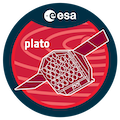Speaker
Description
Half of the Sun-like stars in our galaxy have a stellar companion. The number of detected planets orbiting binary stars is rapidly increasing thanks to the follow-up of TESS planet candidates by GAIA and direct imaging, which detect stellar companions in systems known to host planets. Important questions regarding the origin and demographics of planets in binaries are starting to be explored, namely, how does the presence of a stellar companion affects the outcome of planet formation? How does the occurrence rate of planets depends on binary separation? Is there a radius valley for planets orbiting binary stars? In this presentation I will summarise the latest findings about S-type planets (planets orbiting one of the two stars in a binary system), and I will introduce a global planet formation model that we are developing for binaries, showing some preliminary results. In addition, I will briefly explain a new CHEOPS programme for S-type planets and I will close by discussing the theoretical and observational implications of S-type planets for PLATO.

